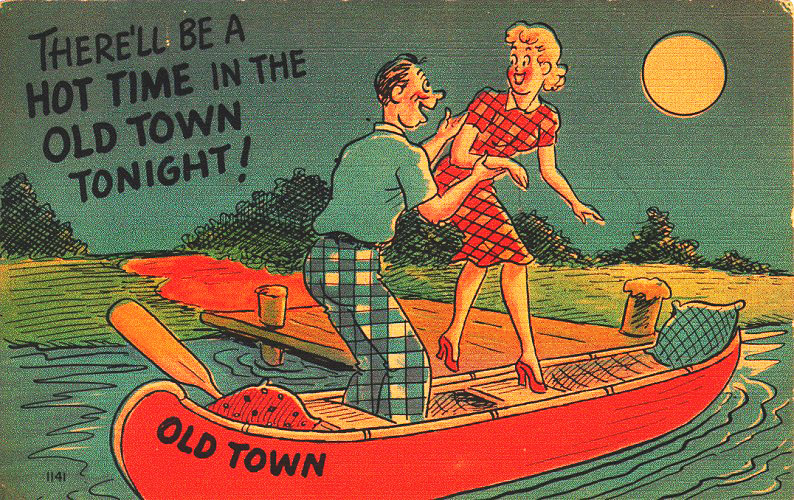
ADVERTISEMENT - CONTINUE READING BELOW
A Moral Panic Over Canoes
In the days before car ownership spread and backseats became ground zero for make out sessions, America’s youth often coupled in canoes. Early twentieth century American youth had limited options for romantic spots. So they took to the water. Canoes had recently become widely available, and they offered youngsters an escape from finger-wagging parents and baleful chaperones, and a bit of privacy for a bit of romance. Canoe sales and permits exploded, and teenagers took to the water with the urgency of salmon fighting their way upstream to spawn. In Minneapolis, for example, 200 canoe permits were issued in 1910. Two years later, that figure skyrocketed to more than 2000.

ADVERTISEMENT - CONTINUE READING BELOW
The term “canoedling” was coined for watery romance. Unsurprisingly, the buzzkill pious and prudes, appalled at the thought that some people might be having fun somewhere, hit the alarm buttons for a moral panic. The Minneapolis Tribune warned the public that: “Girl Canoeists’ Tight Skirts Menace Society“. Other coverage decried the “misconduct in canoes” that threatened to “bring shame upon the city“. A midnight curfew was declared, and park police began to patrol the waterways in motorized boats equipped with spotlights to catch and fine canoedling canoeists. The canoe romance trend finally died out in the 1920s, when cars and car backseats became more widely available.

